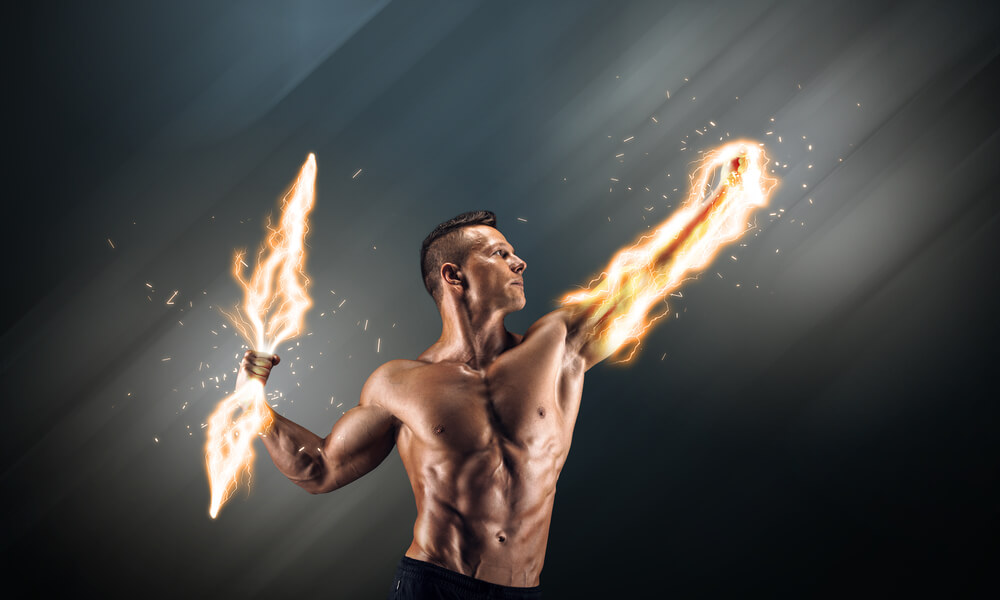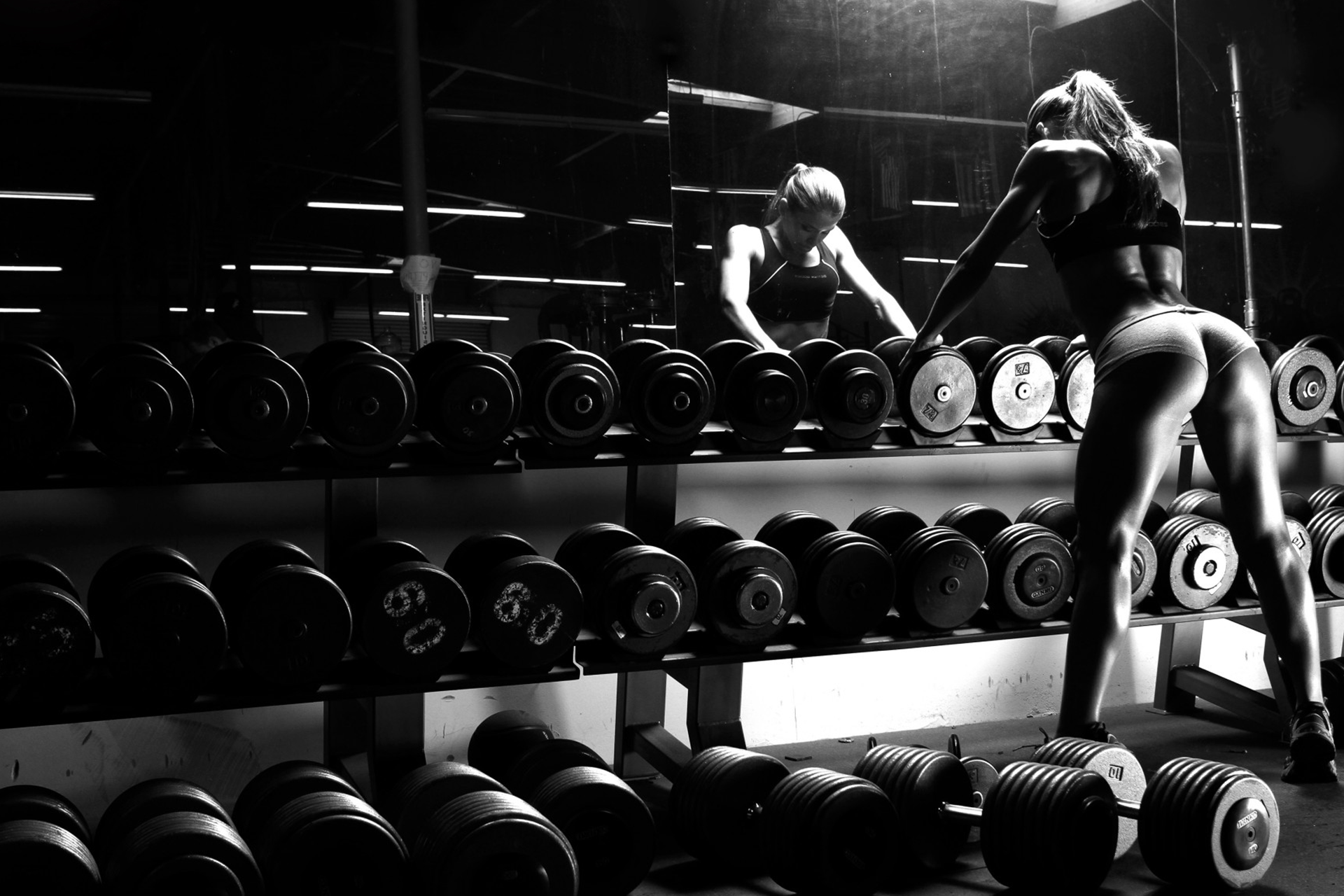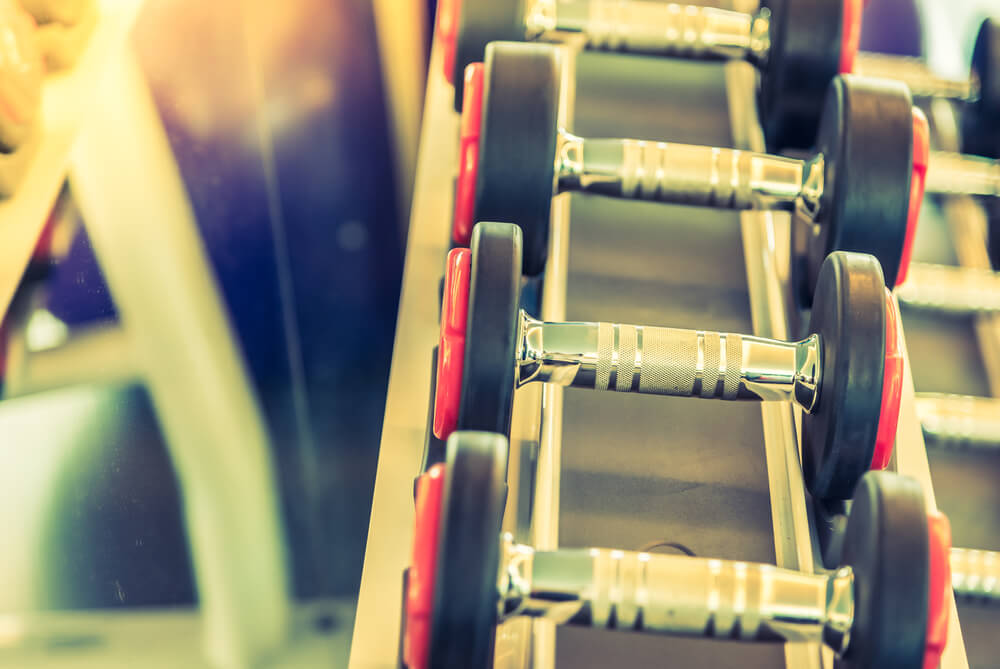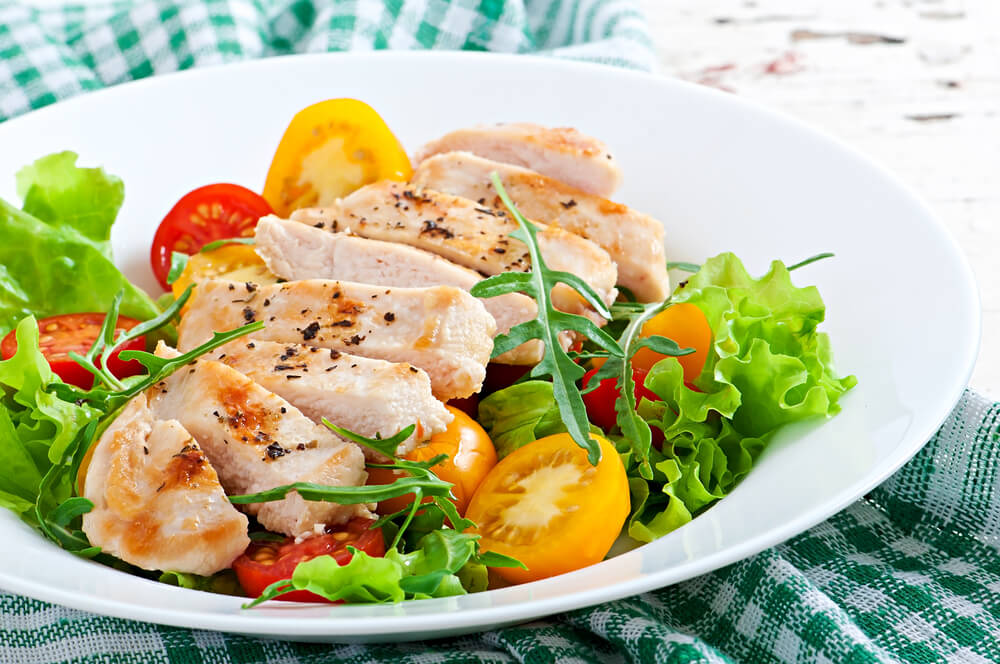
This is a guest post from Mark Sisson of Mark’s Daily Apple. Mark is an expert when it comes to nutrition, I would listen to everything he has to say!
Fitness and Diet
Modern fitness observes that the human body is a mostly symmetrical machine designed to move in specific ways. Compound movements that engage the entire body are best, because our muscles are meant to work in concert together. Real world movements are never done in a vacuum; we don’t move furniture using only our biceps, which is why the best functional strength is developed through exercises like deadlifts, squats, pullups, and presses – exercises that mimic the daily movements men and women have been performing for tens of thousands of years.
When it comes to food, people who might laugh at the guy doing supine single arm bicep preacher curls often commit the same mistake. They focus on calorie counts, eating windows, saturated fat intake, and whether or not they should eat the egg yolks. Numbers are added and subtracted and obsessed over, and it’s all just a mess trying to keep track of everything.

Think for a second
Why not take a step back and think about nutrition the same way you already think about fitness – that the time-tested, functional methods are probably best. Nutrition, when viewed through the prism of evolutionary genetics, can be incredibly simple and intuitive. All it takes to get started is an understanding of two basic concepts:
- For millions of years, humans were hunter-gatherers, subsisting on a diet of animals, seafood, nuts, roots, fruits, and vegetation. They had no access to grains or legumes until roughly 10,000 years ago, when we began developing rudimentary agriculture. If they wanted instant sugar, they probably had to climb a tree and brave a few dozen bee stings for the honeycomb.
- Today, we remain genetically identical to our hunter-gatherer ancestors. 10,000 years is a blink of an eye, evolutionarily, and not nearly enough time for our digestive systems to adapt to the foods of agriculture: grains, legumes, and refined sugars.
Given that information, eating large amounts of carbohydrates, especially those derived from grains, legumes, and sugars, doesn’t seem like the best idea.
Our bodies are still designed for the bulk of our calories to come from fat and protein – the types of macronutrients our ancestors would have gotten from all the animals, insects, and plants they ate. Today, we can just head down to the store and pick up a bag of rice, but that’s a relatively recent development.
Why spend all day gathering up thousands of seeds of sporadically placed wild rice, only to have to soak them for another day just to render them digestible, when you could simply kill a bison and have meat for weeks? It wouldn’t make sense; it would be an incredibly inefficient way to spend the day. That’s not to say that carbs don’t have a place in a healthy diet. They do – it’s just important that they come from good, non-grain sources and that they aren’t consumed in excess.
My Primal Blueprint for optimal human nutrition is founded on anthropological records, but it’s grounded in modern science. It should make perfect sense to anyone with a basic understanding of evolution, and it’s incredibly easy to follow.
Protein
Protein takes priority. Along with fat, it should serve as the foundation of your diet. It’s first in line to repair damaged cells and enzymes, and it’s the most important macronutrient in muscle development. Protein can even be converted to glycogen, meaning you don’t have to rely on carbs for your glycogen needs. There’s really no ceiling for proper protein intake, but active athletes should at least take in 1g of protein per pound of lean body mass each day. Think meat of all kinds, eggs, fish, and nuts (and bugs, if you’re brave).
Carbs
When carbohydrates are ingested, insulin is produced. Insulin plays a lot of roles in the body, but excess insulin results in fat storage and has been fingered as a major factor in numerous chronic diseases.
A cup of rice, or a few slices of bread – completely innocuous, “normal” food for most people – can result in elevated insulin levels that disseminate the fat storage message throughout the body. Without insulin, it’s nearly impossible for our bodies to store fat. As for how many carbs to eat, it varies depending on your activity level.
50-100g per day provides plenty of glycogen to support the energy needs for daily anaerobic exercise (sprints, weight lifting) while allowing effortless fat loss. 0-50g is doable, too, especially for people interested in quickly burning off fat, but you’ll have to make sure you’re eating enough fat and protein.
If you’re training heavily each day, you may be able to increase your carb cycling intake – just make sure you’re not eating grains, legumes, or refined sugar. Think colorful veggies, fruits, roots, and the occasional yam or sweet potato. Even if you gorge on vegetables, you’d be hard pressed to exceed 150g for the day.

Fat
In the absence of excess glycogen from carbs, your body needs a different source of energy. But isn’t glycogen our body’s prime energy source? And doesn’t glycogen come from carbohydrates?
It’s true that most people nowadays run primarily on glycogen, but for millions of years that wasn’t the case. Just remember this: fat is fuel. Learn to love it. I’d argue that we’re genetically predisposed to enjoy the taste of delicious fat (why else does the mere thought of bacon or a butter-drenched steak get us drooling?), so it’s really about unlearning years of low fat fear mongering. Conquer the fear that fat will make you fat and clog your arteries.
Dietary fat doesn’t actually directly lead to body fat, and heart disease is more about inflammation than anything – you can thank carbs and insulin for that. Fat will naturally accompany the protein you eat, but you can supplement it with butter, olive oil, coconut oil, nuts, and avocado – all healthy, delicious sources of fat.
Avoid hydrogenated and trans fats at all costs. Everything else is fair game.
The great thing about the Primal Blueprint is that as long as you cut out the processed grains and legumes and refined sugars, you get to eat all the whole, real foods you want. Fatty cuts of meat, handfuls of nuts, red wine, enormous salads with every vegetable imaginable, fried eggs – this is anything, but a withholding way to eat. It’s the way we were designed to eat, and it’s the most efficient way to get the lean, muscular bodies our genes desire.
If you’re interested in learning why eating, sleeping, and playing like our ancestors is the key to health and longevity, check out my upcoming book, “The Primal Blueprint.”
You guys have all been asking for more nutritional advice, so what did you think of Mark’s article? Leave me comment below with your thoughts or questions….
Latest posts by Terry M (see all)
- Garage Gyms - Aug 1, 2018
- Kettlebells – Why They Should Be Added To Your Routine. - Jul 24, 2018
- Weight Belts: What Are They Really For? - May 31, 2018













Great article. I follow Mark’s website as well as yours Vic. I believe it is definitely the way to live your life!
Keep up the great work!
Joe
This is a fantastic article! Most of this goes against everything I’ve ever learned about what to eat (which is awesome btw), so naturally I’m a little skeptical. Any chance you could link to other articles or academic studies supporting this great info?
I will ask Mark to see if he can chime in on this…
I couldn’t agree with you more. The proof that this works is people who follow this way of living actually get fat loss results.
Low fat foods, diet soft drinks and all this other rubbish are just poisoning people by messing with their metabolism and reducing their fat loss potential.
We are about to witness the first generation that won’t outlive their parents on a regular basis – kids who are under 10 getting high blood pressure, type 2 diabetes and all this other lifestyle problems because of the rubbish they eat.
Actually, I have had the pleasure of working with a great trainer and nutritional coach by the name of Bob Clapp (you can find all of his “info” on the web.) His philosophies are completely aligned with Mark’s and they work. I lost 50 lbs. using a similar nutritional program and had it not been for my proclivity for wine, I would have completed my 90 lb weight loss goal months ago. So I have to disagree slightly with Mark’s red wine comment, only to the degree that the nature of the product consumed, by definition, can lead to bad decisions of all sorts. That said, this program is right on and does work. Thanks again for all your info – I posted to your blog about the 8 workout routines, added a heavy bag routine, and am happy as a pig in, well, you know. Will let you know how this goes, my big 5-0 is in 12 weeks and I can’t wait to rock my own world.
s
Congratulations Sue, that is a HUGE accomplishment.
This should be read by everyone who thinks they are “too old” to make a change in their life.
I hope you keep commenting here at GJ, your story is a great inspiration for anyone trying to hit their fitness goals…
– Vic
Living life without toast & marmalade or chocolate is no life at all, is what I say…..lol
Life progresses! Science progresses! That’s what evolution is. Leave the past firmly in the past! The point is that we are no longer hunter/gatherers and, hopefully, will never be again. Also, our life expectancy now is higher than it’s ever been! I have read millions of arguments to counteract this one. And personally I go with the ‘balanced’ diet. Macronutrients are there because we need them. Our body is made to use glycogen as our first point of energy. You think the very nature of how our body works would lie to us? Insulin is there because we need it TO store fat. How else did we survive in the neolithical times when glycogen wasn’t around?
The sole problem in the 21st century is that we are lazy and eat too damn much! Simple!
Fat loss is simple. East less than you expend! If you do that by eating 10 slices of toast per day or a ton of veg, the result will still be the same. Calories are calories.
After glycogen your body uses fat for energy. Then protein. And protein is your lean tissue ie muscles. if you’re going to be using protein for energy you better be doing some serious muscle building at the same time!! And lets not even go to the organs being lean tissue, as we may just head to the Atkins BS.
Ask your olympic winner Phelps if he can survive on meat and fat to expend his 12000 calories swimming per day??
Sorry Vic, but I strongly disagree with this deprived kind of lifestyle. Eat less, move more!
Tusc 🙂
Interesting article. I would like to know how Mark would suggest vegetarians eat like this. I have to agree a bit with Tusc…it seems a little severe. However, I have noticed when I cut out most grains and sugar, I do feel TONS better…so it’s a toss up. I would prefer not to eat meat. Any suggestions out there? Tofu and nuts are great, but sometimes you just need rice and beans 🙂
I really hate to disagree with you TuscanyStone, but I must.
Yes, our body uses glycogen first, because it is very easy to break down carbohydrates into glycogen. You’re body won’t ever work harder than it has to, it’s counter intuitive to survival. Mark never says not to eat fruit or vegetables. These will give you all the carbs you need to function. Plus there’s ketone bodies to take up the slack as well.
Calories are calories, eat less & exercise, 10 slices of toast or vegetarian, fat loss is simple.
This thinking has prevailed for the past 60 years while obesity and disease have skyrocketed. Sure, you COULD lose weight by eating 10 slices of toast, but you would be malnourished, starving and miserable. Eating meat and vegetables will keep you satisfied and your nutrient intake will usually exceed the US RDA’s.
After glycogen your body uses fat for energy. Then protein. And protein is your lean tissue ie muscles. if you’re going to be using protein for energy you better be doing some serious muscle building at the same time!!
If your body always uses glycogen first, how do you ever expect to get to fat burning without restricting glycogen? And we aren’t talking about starvation here, your body won’t touch your muscle tissue for food until right before you die. The body does use protein to synthesize glycogen, but only the bare minimum it needs for brain functions(neoglucogenesis is biologically expensive and inefficient)which really isn’t much. To do this it makes use of free amino acids from the food you eat (Mark said lots of protein)plus junk proteins that you body is constantly recycling during cellular breakdown and repair. We aren’t using protein for energy, we are using fat. As far as muscle building while paleo, did you not see Mark’s pic? Or check out Keith at Theory to Practice.
No, Michael Phelps can’t perform the way he does on zero carbs (which again, Mark never suggested..) because swimming is explosive and anaerobic. Doing explosive exercise for hours on end requires a lot of glycogen. But 20-30 minutes a day of explosive exercise (which is all most of us average humans have time for) is easily achieved on a lower carbohydrate diet. I have to wonder if you even read the article, as Mark addressed the need for athletes to eat more carbs.
As far as a deprived lifestyle, and can think of no more deprived life than one where you strap yourself to a treadmill for hours at a time, then eat small amounts of foods which put you on an insulin rollercoaster (thus making you hungrier) until you break down and go face first into the Ben & Jerry’s, become consumed with guilt, and start all over. This is what the majority of people subscribing to the low-cal, low-fat religion do. I’ve seen it and done it. It does not work as a lifestyle, and it is a lifestyle that Mark is recommending.
Redbeerd – Excellent deconstruction of his argument. You really know your stuff.
Julie – If you eat fish, getting enough good protein and fat is easy (sardines, salmon, mackerel, etc). Dairy and eggs are other options. Whey protein is another. If you don’t do any animal-based products, it’s probably not gonna work out. Nuts won’t sustain you alone. (and tofu isn’t exactly paleo/primal)
Hi Redbeerd..
I must admit. What I’ve found from you Paleo followers is that you’re quite obsessed by this lifestlyle and nothing I, or anyone else can say, can disuade you. Which is fine by me 🙂
Just a couple of points that you’ve taken too seriously:
10 slices of bread was just an exageration to make a point! I’m not suggesting, for one minute, that this is healthy….lol… only that if you digest less calories than you expend, you WILL lose fat.
Also, when I suggested that your body will use lean tissue as energy, I was more thinking of someone who had lost all their body fat! lol
Mark’s phyisque can be obtained if a similar person ate bread/pasta/rice in their diet, and indeed has been obtained by many a dedicated athlete NOT giving up the grain! The six pack is due to low body fat and muscle definition, and good nutrition, not the ‘paleo’ diet specifically!
You missed that whole point of my argument I’m afraid. I advocate ‘balance’ in life, not cutting things out cos someone thinks our ancestors were healthier. Cos that’s utter rubbish. The problem today is that we have too much choice. We are greedy. And we arn’t active enough.
That’s it really.
But good luck to you if you choose to cut out grain and sugar from your diet for the rest of your life. That’s entirely your perogative my friend,
tusc 🙂
Good article, but since I study/studied both biology/evolution and partly medicine I need to tell you that despite of diseases and murder a nutrition like this is one of the reasons why our ancestors didn’t get old. The amount of “bad” material that our kidneys and liver need to filter with this diet is much higher than with carbs. Include alcohol to this diet and it’s even worse (refering to the red wine). I know most people who eat carbs tend to buy unhealty crap which is worse than high protein leading to cardiovascular diseases that make them the killer number one in the western world. Still don’t think this is the way to live if you aren’t doing sports and check your cholesterin/triglycerieds/etc. However, because I do sports and check my blood I pretty much follow this diet, so don’t think I see this as a bad way to live. One more thing, english isn’t my mother tongue so excuse any mistakes.
Greetings from Germany.
Wow, this might be our most controversial post ever! Or at least the comments are flying at opposite ends. I really appreciate everyone maintaining courtesy, even when you disagree – that’s why we love our GymJunkies’ readers!
My take on it. . . when I want to lean out fast, I eat damned near exactly like Mark advises. And that’s really what it comes down to, you have to try it on yourself. All of this training and dieting is just a big science project – track your diet and exercise and see if it gets the results you desire. If it doesn’t, something needs to change. If it does, then you know you have something that works.
Keep the comments coming!
No need to wish me luck, I’ve maintained my goal weight effortlessly for the past two years. And I’m not really a paleo follower (I love dairy), but a lot of the principles work very well, and really take the complication out of maintaining a healthy weight.
And I find it laughable that you ridicule the idea of cutting out sugar, yet on your own blog talk about how miserable you are not being able to drink alcohol or eat chocolate, and that you can’t wait for your “diet” to be over (I assume so you can return to the habits that made you overweight in the first place)!
A calorie deficit is required to burn body fat, but I find it far easier to achieve by eating meat and vegetables than by doing endless hours in the gym and denying myself the pleasure of a glass of wine and some dark chocolate. That’s the difference between a “diet” and a lifestyle.
Also, when I suggested that your body will use lean tissue as energy, I was more thinking of someone who had lost all their body fat! lol
Huh? Again, when did Mark mention starvation? Energy is obtained through dietary fat – please read the article.
Mark’s phyisque can be obtained if a similar person ate bread/pasta/rice in their diet, and indeed has been obtained by many a dedicated athlete NOT giving up the grain! The six pack is due to low body fat and muscle definition, and good nutrition, not the ‘paleo’ diet specifically!
Yes, a “dedicated athlete” could eat all the bread/rice/pasta they want and get Mark’s physique (Mark did it himself), but we aren’t talking about them, are we? The nice thing about eating the way Mark recommends is that you don’t have to be a dedicated athlete to get results.
You missed that whole point of my argument I’m afraid. I advocate ‘balance’ in life, not cutting things out cos someone thinks our ancestors were healthier.
I only responded because it was obvious that you had missed Mark’s point completely. You never made an “argument”, you simply spouted unsupported rhetoric in a manner that was dismissive and rude. I don’t agree with everything Mark or many other “paleo” people have to say, but I make a point not to knock something until I’ve tried it. I tried your way before, and I was just as miserable as you admit to being.
I wish you the best in your efforts, but if you find they aren’t working as well as you’d like please be open to something new. It worked for me and many others.
Dr. Dan has been eating paleo for a while – I enjoy his blog because of the gastro-porn pictures. He really makes this style of eating look incredibly appetizing
http://darwinstable.wordpress.com/
DR, many thanks for the link! Meat and vegetables can certainly be sexy as hell!
why is the guy writing this article build like a twig cmon gimme a break
if you want to protect the integrity of your heart, then low fat foods should be the thing to go ~,,